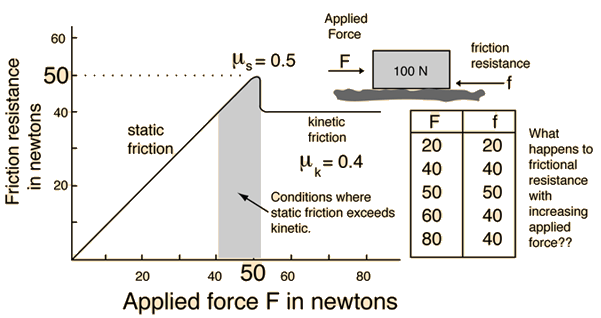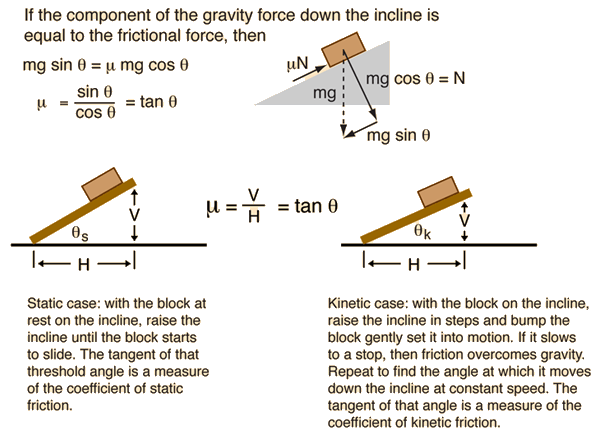Friction (original) (raw)
Friction Plot
Static friction resistance will match the applied force up until the threshold of motion. Then the kinetic frictional resistance stays about constant. This plot illustrates the standard model of friction.

The above plot, though representing a simplistic view of friction, agrees fairly well with the results of simple experiments with wooden blocks on wooden inclines. The experimental procedure described below equates the vector component of the weight down the incline to the coefficient of friction times the normal force produced by the weight on the incline.

Having taken a large number of students through this experiment, I can report that the coefficient of static friction obtained is almost always greater than the coefficient of kinetic friction. Typical results for the woods I have used are 0.4 for the static coefficient and 0.3 for the kinetic coefficient.
When carefully standardized surfaces are used to measure the friction coefficients, the difference between static and kinetic coefficients tends to disappear, indicating that the difference may have to do with irregular surfaces, impurities, or other factors which can be frustratingly non-reproducible. To quote a view counter to the above model of friction:
"Many people believe that the friction to be overcome to get something started (static friction) exceeds the force required to keep it sliding (sliding friction), but with dry metals it is very hard to show any difference. The opinion probably arises from experiences where small bits of oil or lubricant are present, or where blocks, for example, are supported by springs or other flexible supports so that they appear to bind." R. P. Feynman, R. P. Leighton, and M. Sands, The Feynman Lectures on Physics, Vol. I, p. 12-5, Addison-Wesley, 1964.
Reference
Jones & Childers, 2nd Ed.
Sec 4.8